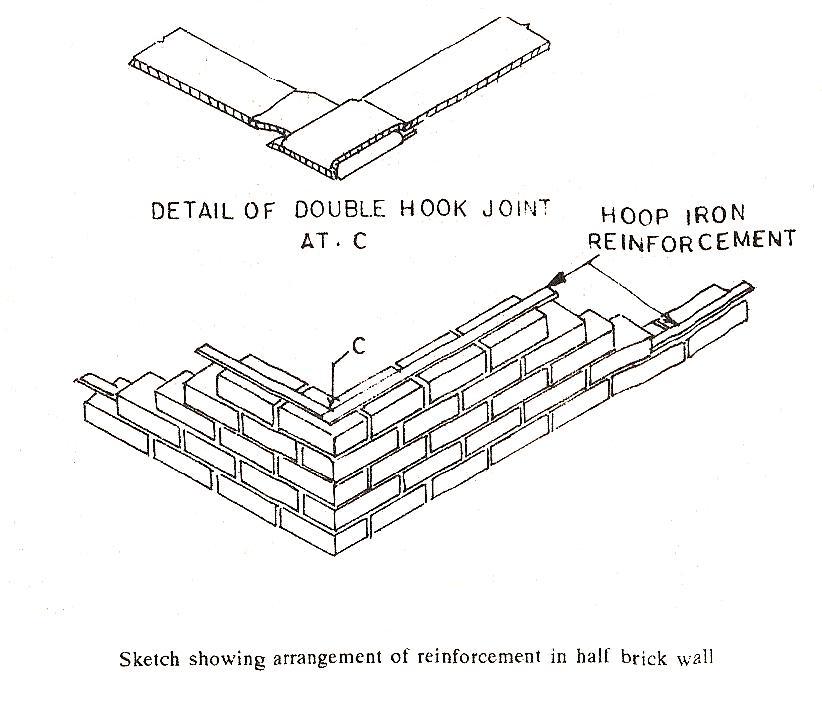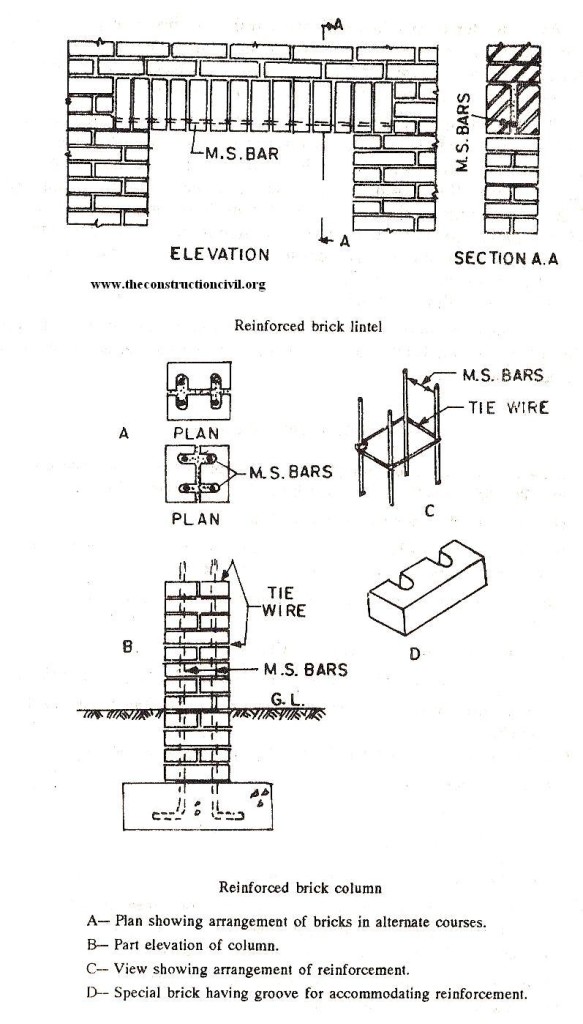Reinforced Brick Masonry
Brick work strengthened by introduction of mild steel flats, hoop iron, expanded mesh or bars is termed as reinforced brick masonry. This reinforced brick masonry is capable of resisting both compressive as well as tensile and shear stress. On account of its ability to resist lateral forces, reinforced brick masonry is extensively used in seismic areas. It is essential to use first class bricks (having crushing strength of 140 kg/sq. cm or more) and rich and dense cement mortar in the reinforced brick work. The reinforcement should be effectively bedded and surrounded with mortar cover of 15 to 25 cm. This is necessary to protect the reinforcement against corrosion.
As a matter of practice half brick walls are invariably reinforced by providing 6 to 8 mm dia bars or hoop iron (less than 8 mm in thickness) at every third or fourth course. Construction of reinforced brick lintels and roof/floor slabs is also quite common.
Reinforced brick masonry is frequently adopted for the construct ion of retaining walls especially in places where exposed brick work is necessary from architectural considerations. It is seen (hat reinforced brick retaining wall upto 4m height works out to be cheaper as compared with R.C.C. retaining walls. Such a wall is made by using special bricks (having grooves for accommodating reinforcing bars) in cement mortar 1 : 3 and reinforced with vertical MS rounds placed near each face. Horizontal reinforcement in the form of steel meshed strips are also provided at every third or fourth course.
Construction of reinforced brick column is more or less similar to that of reinforced brick wall except that the horizontal steel mesh is replaced by stirrups.


